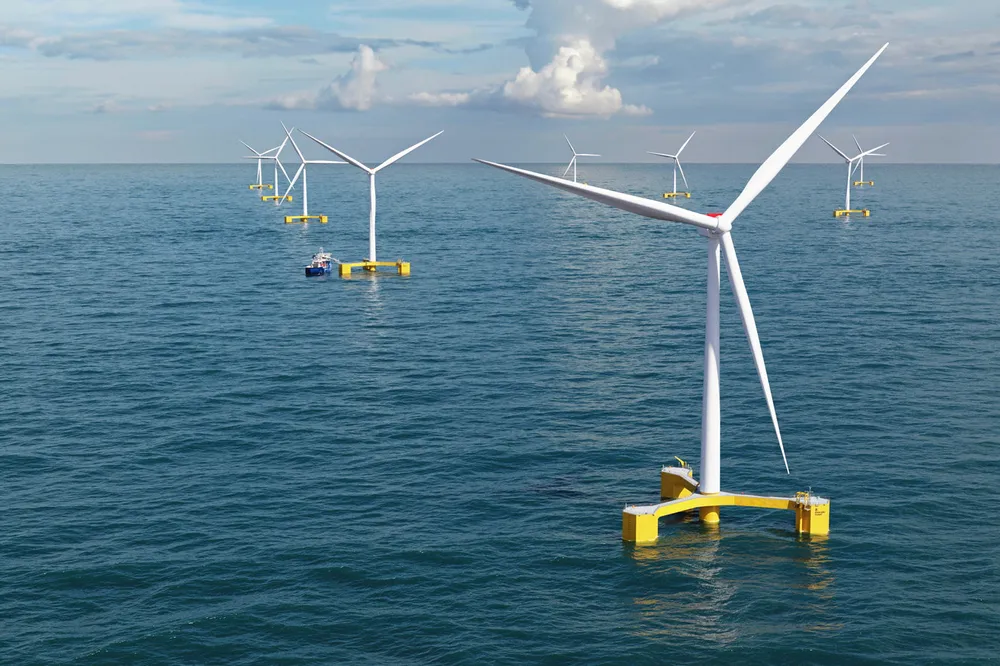Principle Power unveils centre-column platform designs as floating wind towers stiffen
Stiffer towers require less customisation making them easier to mass produce as industry standardises, says sector pioneer

Floating wind turbine towers are getting stiffer as the sector ramps up its drive to standardise, prompting sector pioneer Principle Power to release two new centre-column platform designs better suited to the newer models.
Principle Power today unveiled two new additions to its WindFloat platform series that has helped drive the company, which has its roots in California and adopted homes in Portugal and France, to the forefront of the floating wind sector.
The semi-submersible WindFloat platforms have until now supported turbine towers on one of the corners of the triangle-shaped structure. The new designs, one tubular and one flat-panel, offer options shifting the tower to the platform’s centre.
This is because the approach has been to take off-the-shelf fixed-bottom technology and use “really minimal adaptations,” including a site-specific tower, to make it suitable for floating wind projects, he said.
But OEMs are now preparing for projects of 100 15MW-rated turbines and more, bringing with it an “opportunity for greater standardisation”, he added.
Softer turbine towers have a coupled natural frequency that is below the blade passing frequency. The benefits of softer towers are that they are lighter, and therefore cheaper to produce, he added.
The challenge is that, with increasingly larger wind turbines, the rotor speed (and corresponding blade passing frequency) decreases, narrowing the design range for the structures.
Stiffer towers, in contrast, have a coupled natural frequency above that of the passing blade and rotor. This helps avoid resonance when the frequencies of the tower and turbine align, which can cause vibrations that lead to structural damage.
Turbines with stiffer towers need less customisation than the softer variety, making them easier to mass produce and unlocking economies of scale. Those are key concerns of a floating wind sector looking to standardise and industrialise as it moves into gigawatt-scale projects.
Partly because of these factors, Smith said some manufacturers are now looking at stiffer towers for floating wind projects.
Perimeter column designs are still the most competitive option for 15MW turbines using the softer towers, said Smith. But for turbines using stiffer towers, there are various reasons that centre column designs are "more efficient structurally," including that they have lower inertia.
Now, if an OEM uses stiffer towers, he said Principle Power can deliver a centre column platform that is “much lighter” than a perimeter design would be.
The new centre-column designs will benefit from other design features shared by its fourth-generation platform range revealed last year.
They include a smart hull trim system, which moves water from column to column to keep the platform and turbine vertical; fatigue-resilient architecture optimised for large wind turbines; and compact footprint and shallow wind turbine integration draft for maximum compatibility with infrastructure.
The designs also retain the modular “block” subcomponent philosophy for high flexibility and compatibility with existing supply chains needed to realise the first commercial-scale projects.
(Copyright)